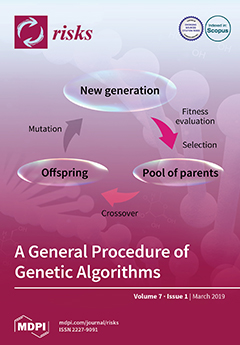As is well-known, the benefit of restricting Lévy processes without positive jumps is the “
scale functions paradigm”, by which the knowledge of the scale functions
extends immediately to other risk control problems. The same is true
[...] Read more.
As is well-known, the benefit of restricting Lévy processes without positive jumps is the “
scale functions paradigm”, by which the knowledge of the scale functions
extends immediately to other risk control problems. The same is true largely for strong Markov processes
, with the notable distinctions that (a) it is more convenient to use as “basis” differential exit functions
, and that (b) it is not yet known how to compute
or
beyond the Lévy, diffusion, and a few other cases. The unifying framework outlined in this paper suggests, however, via an example that the spectrally negative Markov and Lévy cases are very similar (except for the level of work involved in computing the basic functions
). We illustrate the potential of the unified framework by introducing a new objective (33) for the optimization of dividends, inspired by the de Finetti problem of maximizing expected discounted cumulative dividends until ruin, where we replace ruin with an optimally chosen Azema-Yor/generalized draw-down/regret/trailing stopping time. This is defined as a hitting time of the “draw-down” process
obtained by reflecting
at its maximum. This new variational problem has been solved in a parallel paper.
Full article





